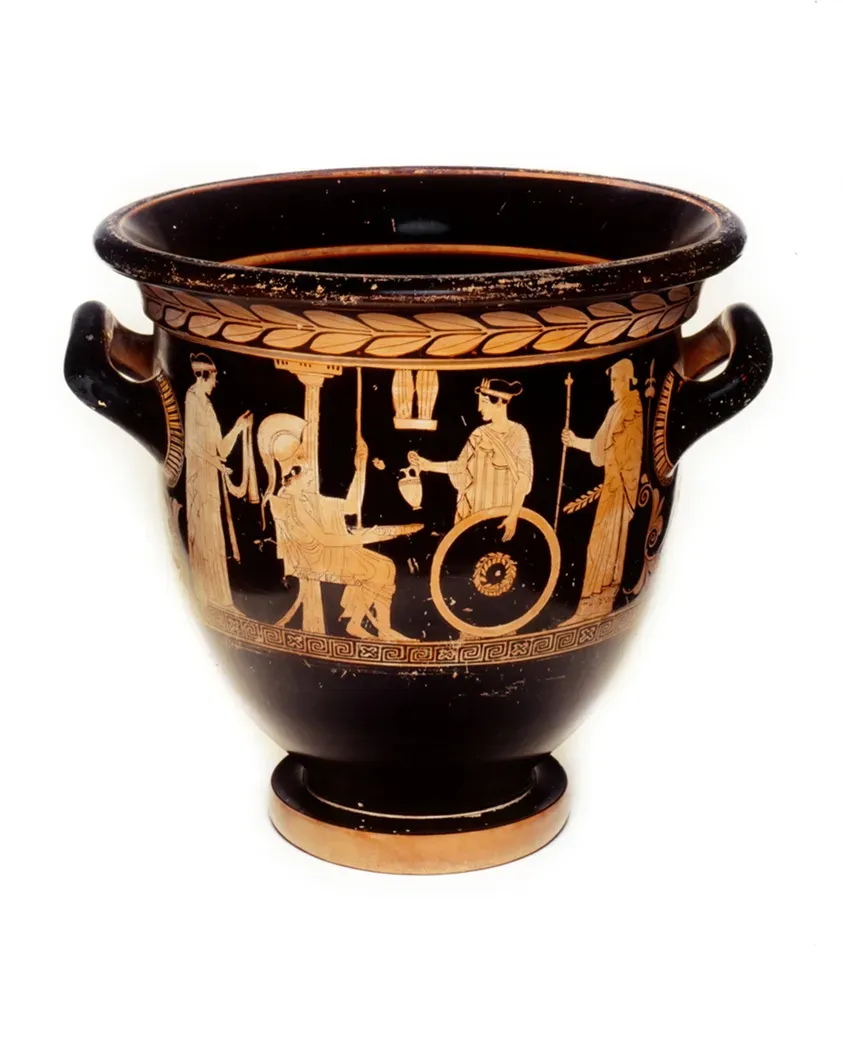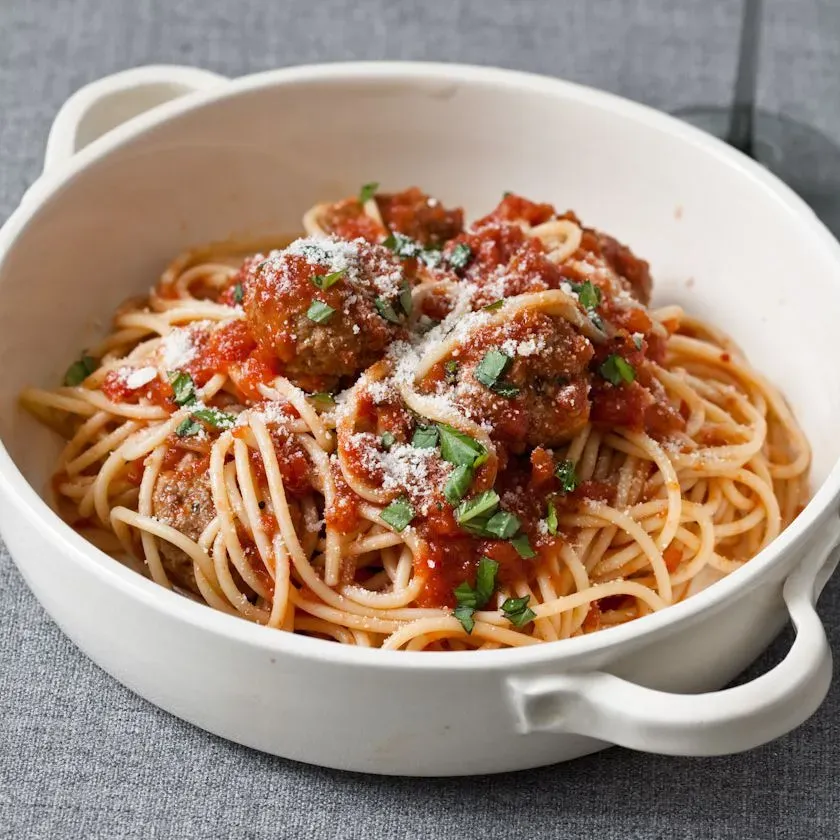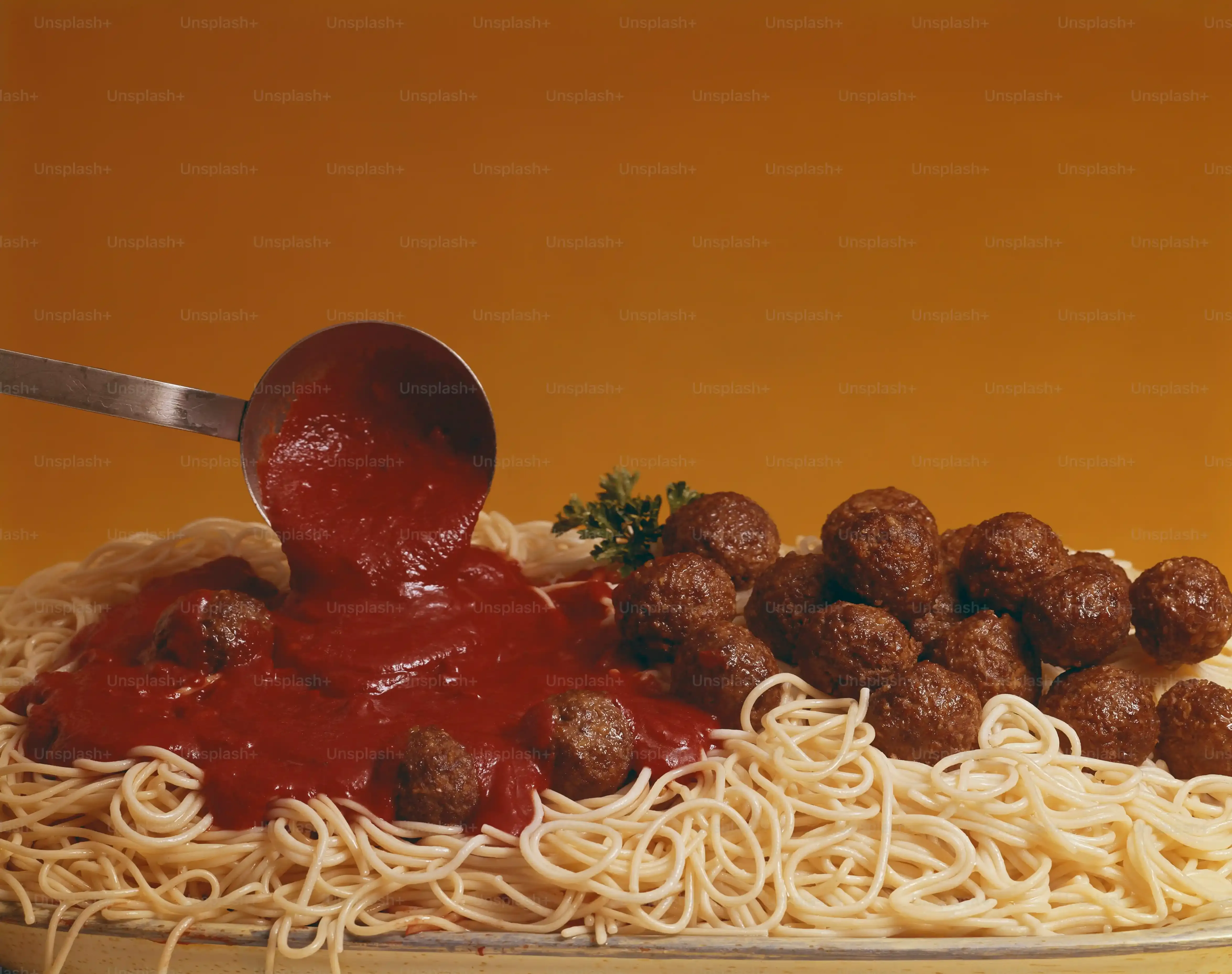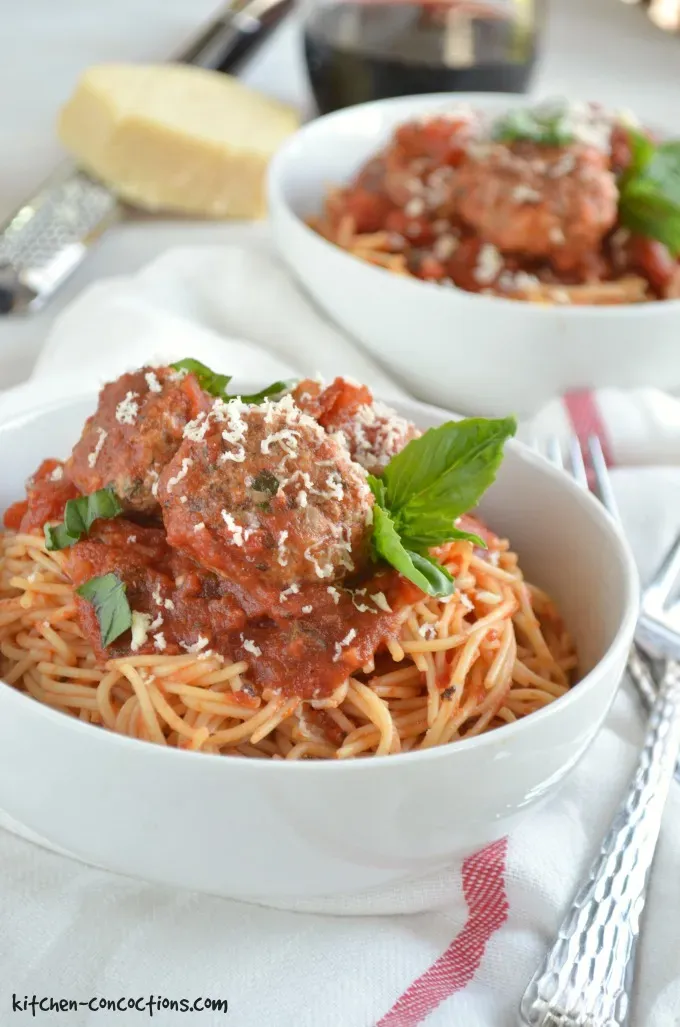Table of Contents
Let's be honest, sometimes you just need a plate of something familiar, something that feels like a warm hug after a long day. Something that transports you back to Sunday dinners, even if you never had them. That, my friends, is the power of a truly great classic spaghetti and meatballs recipe. Forget the watery sauces and hard little meat-pellets you've encountered elsewhere. We're talking about the real deal here – a rich, slow-simmered tomato sauce that clings perfectly to the pasta and meatballs so tender they almost melt in your mouth.
Why This Classic Spaghetti and Meatballs Recipe Stands Out

Why This Classic Spaghetti and Meatballs Recipe Stands Out
More Than Just Ingredients in a Pot
Alright, listen. Anyone can throw some ground meat and canned tomatoes together and call it spaghetti and meatballs. But a *classic* spaghetti and meatballs recipe? That's different. This isn't just about combining ingredients; it's about process and patience. It’s about building layers of flavor from the ground up, coaxing richness out of simple components. We’re talking about a sauce that simmers long enough to develop real depth, not just taste like raw tomatoes. And the meatballs? They aren't just browned and dumped in; they're crafted to be tender and flavorful inside, absorbing the sauce as they finish cooking.
There's a reason certain dishes become classics, and for this one, it's the reliable, comforting outcome. You know exactly what you're getting – a hearty, deeply satisfying meal that rarely disappoints. Unlike some trendy recipes that promise the moon and deliver lukewarm dishwater, this classic spaghetti and meatballs recipe consistently hits the mark. It’s the culinary equivalent of your favorite worn-in sweater; dependable, comfortable, and always makes you feel good.
So, what makes a spaghetti and meatballs recipe truly "classic"?
- A slow-simmered sauce with real depth.
- Meatballs that are tender, not tough.
- Balance: the sauce complements the meatballs, and vice versa.
- Reliability: it turns out great almost every time.
- That unmistakable comfort food feeling.
Cutting Through the Noise of "Easy" Recipes
Walk into any bookstore or browse online, and you'll find a million "easy," "quick," or "30-minute" spaghetti and meatballs recipes. Most are shortcuts that sacrifice flavor for speed. They skip the low-and-slow simmer, use pre-made ingredients, or cut corners on the meatball binding. This classic spaghetti and meatballs recipe avoids those pitfalls. It demands a little more time, sure, but the payoff in taste and texture is exponential. You won't find any watery sauce or rubbery meatballs here. It’s about respecting the tradition and technique that makes this dish sing.
Think of it like building a house. You can slap something together with plywood and nails, or you can use quality materials and proper construction methods. The latter takes longer, costs a bit more effort, but results in something sturdy and lasting. This recipe is the culinary equivalent of the well-built house. It's not the fastest way to get dinner on the table, but it's arguably the best way to experience this iconic dish as it was meant to be.
Building the Soul: The Essential Spaghetti Sauce for Your Classic Dish

Building the Soul: The Essential Spaghetti Sauce for Your Classic Dish
Why the Sauce Isn't Just an Afterthought
Look, anyone can boil some pasta and dump jarred sauce on it. You know that. But for a truly *classic* spaghetti and meatballs recipe, the sauce isn't just a condiment; it's the backbone, the liquid foundation that holds the whole thing together. This is where the deep, rich flavor comes from. We're not aiming for something thin and acidic here. We want a sauce with body, a sauce that has simmered long enough for the flavors to meld and intensify, a sauce that tastes like it’s been cooked with intention, not just heated up.
Think of it as the slow heartbeat of the dish. It requires patience. You can't rush greatness, and a proper Italian-American gravy (yes, some folks call it gravy, let's not start a fight) needs time on the stove. This slow cook allows the tomatoes to break down completely, releasing their sweetness and complexity, and lets the herbs and aromatics infuse every drop. It’s this dedication to the sauce that elevates a simple weeknight meal into something truly memorable.
Starting with the Right Tomatoes (It Matters)
You want to build a great house, you start with a solid foundation. You want a great classic spaghetti and meatballs recipe, you start with great tomatoes. Period. Those pale, flavorless things you find in some cans? Skip 'em. If you can find them, San Marzano tomatoes from Italy are the gold standard for a reason. They have a lower acidity and a sweeter, more intense flavor straight out of the can. Crushed is generally the way to go for ease, but whole peeled San Marzanos that you crush yourself offer a slightly fresher taste. If San Marzanos aren't an option or budget-friendly, look for the best quality canned crushed tomatoes you can find, preferably ones that list only tomatoes and citric acid (or nothing else) in the ingredients.
Beyond the tomatoes, the aromatics are key. Sautéed onion and garlic are non-negotiables. Some recipes add a touch of carrot or celery for sweetness and depth early on. A bay leaf, a sprinkle of dried oregano, maybe a pinch of red pepper flakes if you like a little warmth – these are the supporting players that make the tomato base sing. Don't be shy with the olive oil when you start; it helps build flavor from the beginning.
What's the biggest mistake people make with their sauce?
- Not simmering it long enough.
- Using poor quality canned tomatoes.
- Skipping the initial sauté of aromatics.
- Underseasoning.
- Adding too much sugar to compensate for bad tomatoes.
Crafting the Perfect Italian Meatballs for This Classic Spaghetti and Meatballs Recipe

Crafting the Perfect Italian Meatballs for This Classic Spaghetti and Meatballs Recipe
More Than Just Ground Meat
so you've got your killer sauce simmering away, filling your kitchen with promises. Now, let's talk about the other half of this dynamic duo: the meatballs. Crafting the perfect Italian meatballs for this classic spaghetti and meatballs recipe is crucial. We aren't just rolling up some ground beef and calling it a day. A proper Italian-American meatball, the kind you want swimming in that rich sauce, uses a mix of meats – typically beef and pork. This blend gives you both flavor and tenderness. Pork adds fat and moisture, preventing those sad, dry lumps. The binder is key too; forget dry, dusty breadcrumbs. We're talking about using fresh or slightly stale bread soaked in milk (or water) and squeezed out. This creates a much more tender, cohesive meatball. Add in finely minced garlic, fresh parsley, some grated Pecorino Romano or Parmesan for that salty punch, an egg or two to help bind, and of course, salt and pepper. Mix it gently – overmixing is the enemy of tender meatballs.
Don't stress about making them perfectly uniform spheres. Rustic is fine. The goal is flavor and texture. Once mixed (again, gently!), roll them out. Size is up to you, but something golf-ball to slightly larger works well; they'll shrink a bit as they cook. Some folks brown them first in a pan, which adds another layer of flavor through caramelization. Others drop them straight into the simmering sauce to cook through, which results in incredibly tender, sauce-infused meatballs. Both methods have their champions, but adding them to the sauce for at least the last hour of simmering is non-negotiable for them to absorb that beautiful flavor.
What's the secret ingredient for truly tender meatballs?
- Using a mix of ground beef and pork.
- Using soaked bread instead of dry breadcrumbs.
- Gentle mixing of the ingredients.
- Not overcrowding the pan if browning.
- Letting them finish cooking *in* the sauce.
Bringing It All Together: Serving Your Classic Spaghetti and Meatballs

Bringing It All Together: Serving Your Classic Spaghetti and Meatballs
Getting the Pasta Right: The Crucial Final Step
you've got the deep, slow-simmered sauce humming and the tender meatballs bathing in it. Now comes the grand finale: the pasta. This is where things can go sideways if you're not paying attention. The biggest mistake? Boiling the pasta, draining it completely, and then dumping the sauce on top. Don't do that. You lose that starchy magic that helps the sauce cling beautifully. Cook your spaghetti (or whatever pasta shape you prefer – though spaghetti is classic for a reason) in generously salted boiling water until it's just shy of al dente. We're talking a minute or two less than the package directions. Why? Because it's going to finish cooking *in* the sauce.
Before you drain, scoop out about a cup of that starchy pasta water. This stuff is liquid gold. Drain the pasta, but leave a little water clinging to it. Immediately add the drained pasta directly to the pot with your simmering sauce and meatballs. Toss it gently but thoroughly. That reserved pasta water? Add it a tablespoon at a time if needed to help create a glossy, cohesive sauce that coats every strand. Let it cook together for another minute or two, tossing constantly, until the pasta is perfectly al dente and the sauce is hugging it like an old friend.
The Art of Plating: Making It Look as Good as It Tastes
You've put in the work, so don't just slop it onto a plate. Presentation matters, even for comfort food. Spoon a generous amount of the sauced pasta onto a shallow bowl or plate. Arrange the meatballs artfully on top – don't hide them under a mountain of spaghetti. You want people to see those beautiful, tender spheres. The sauce should look rich and vibrant, not greasy or thin. A little swirl of pasta helps create height and visual appeal. It's not about being fussy; it's about respecting the dish you've created.
Think about the colors: the deep red of the sauce, the brown of the meatballs, the pale yellow of the pasta. They're simple, but classic. A well-plated classic spaghetti and meatballs recipe is inviting. It promises warmth and satisfaction before the first bite. It says, "Someone cared about making this for you."
Common Plating Pitfalls to Avoid:
- Overfilling the plate (it looks messy and is hard to eat).
- Hiding the meatballs under the pasta.
- Letting the pasta sit too long before serving (it gets cold and sticks together).
- Not wiping the rim of the plate (little drips ruin the clean look).
Finishing Touches: Grated Cheese and Fresh Herbs
No plate of classic spaghetti and meatballs is complete without the final flourishes. A generous dusting of freshly grated hard Italian cheese is non-negotiable. Parmigiano Reggiano is king, but a good Pecorino Romano adds a sharper, saltier bite that some prefer. Grate it right over the plate at the table if you can; the aroma is part of the experience. A sprinkle of fresh herbs adds brightness and a pop of color. Torn basil leaves are traditional and add a sweet, aromatic counterpoint to the rich sauce. A little chopped fresh parsley works too. These aren't just garnishes; they're flavor enhancers that lift the whole dish. Don't skip them. A drizzle of good quality extra virgin olive oil over the top just before serving can also add a lovely richness and sheen.
Making it Your Own: Tips and Variations for the Classic Spaghetti and Meatballs Recipe

Making it Your Own: Tips and Variations for the Classic Spaghetti and Meatballs Recipe
Playing with the Meatball Mix
so the classic blend of beef and pork is solid, it's the foundation, the little black dress of meatballs. But who says you can't accessorize? You want to dial up the flavor? Swap some of the beef or pork for veal. It adds a different kind of tenderness and a slightly more delicate flavor profile. Or maybe you're feeling adventurous? A little bit of ground lamb can introduce a whole new dimension, though perhaps less "classic Italian-American" and more "bold move." Don't be afraid to tweak the ratios either. More pork means fattier, potentially juicier meatballs. Less bread binder can result in a denser, more purely meaty ball, though you risk dryness if you're not careful. Experiment with adding different cheeses too. A sharp provolone minced finely can melt into gooey pockets inside, or smoked mozzarella for a hint of something different. The point is, once you understand the basic structure of a tender meatball for your classic spaghetti and meatballs recipe, you can start improvising.
Tweaking the Sauce for Different Flavors
That slow-simmered tomato sauce is perfect as is, but sometimes you want a little twist. Want more heat? A generous pinch of red pepper flakes added early with the garlic works wonders. Feeling fancy? Stir in a splash of red wine after sautéing the aromatics and let it reduce before adding the tomatoes; it adds depth and complexity. A touch of sugar can balance acidity if your tomatoes are a bit sharp, but use it sparingly – it shouldn't taste sweet. For a richer sauce, some cooks add a small amount of tomato paste and let it caramelize slightly before adding the crushed tomatoes. You could also play with different herbs. While basil and oregano are standard, a touch of thyme or even a bay leaf adds subtle background notes. Don't just blindly follow the recipe forever; taste, adjust, and make that classic spaghetti and meatballs recipe truly yours.
What are some easy sauce variations?
- Add red wine for depth.
- Increase red pepper flakes for heat.
- Stir in caramelized tomato paste for richness.
- Experiment with different herbs like thyme.
Beyond Spaghetti: Pasta Choices and Serving Styles
While the name is classic spaghetti and meatballs recipe, you are by no means shackled to that specific shape. Any long pasta works beautifully – linguine, fettuccine, even bucatini with its hollow center to trap extra sauce. Shorter shapes? Absolutely. Penne, rigatoni, or even orecchiette can be fantastic, especially if you like scooping up sauce and little bits of meatball with each bite. The key is still cooking it just shy of al dente and finishing it in the sauce. And think about serving it differently sometimes. Instead of a standard plate, ladle it over creamy polenta or even mashed potatoes for a different kind of comfort. Or serve the meatballs separately as appetizers, swimming in a small bowl of sauce, before bringing out the pasta course. The classic presentation is classic for a reason, but breaking the mold occasionally keeps things interesting.
The Proof is in the Plate
So there you have it. You've navigated the simmer, shaped the meatballs, and brought it all together. This classic spaghetti and meatballs recipe isn't about speed or fancy techniques; it's about patience and understanding how simple ingredients, treated with respect, can build something truly satisfying. You didn't just cook dinner; you created a meal with history, a dish that comforts and connects. The mess in the kitchen? A small price to pay for a bowl of this.